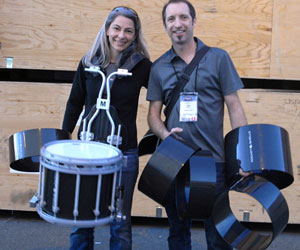History
The first ROCKET SHELLS TM drum shell was built in 1992 - the result of a “perfect storm” of innovation, ideas, and experiences.
Owner and company founder Paul Hewitt has been intrigued with the drums since the age of ten. Since childhood you could find him tinkering, building, testing, and rebuilding anything from skateboards to the kitchen toaster, constantly in pursuit of mechanical perfection. Paul has received a solid and diverse education, receiving degrees in both Psychology and Engineering. “Understanding customers’ needs and being able to deliver on those needs is Rocket Shells main objective.” At the age of twenty-one, Paul found himself working as the production manager at Neill Pride Maui, a leading windsurfing equipment manufacturer.
-
“This was during the peak of the sport, a time when world class athletes were pushing their equipment to the absolute limits. We were working daily with the 11x World Champion, and he was very particular about his equipment.” Manufacturers were forced to experiment with new materials, because wood, aluminum and fiberglass, were too heavy, too weak, and had poor performance characteristics. The inherent properties of carbon fiber made it an obvious choice, but manufacturing needed to be reinvented. Ultimately, hand tools were replaced by CNC shaping, low tech lamination techniques were replaced by high pressure curing, and brittle polyester resins were replaced with stronger epoxy resins. Boards, sails and masts became lighter, stronger, and performed better than ever before. Sailors were going faster, jumping higher, and performing at higher levels than were ever imagined. “We were making radical changes in design every few months.” “During my spare time, I was playing
-
drums a lot and experimenting with making and refinishing drum shells. Hawaii was extremely hard on equipment, and even the highest quality instruments would eventually fail due to the harsh weather conditions. Transporting drums from the studio to a venue wreaked havoc on tuning because the shells were contracting and expanding so much due to the temperature and humidity changes.” At about the same time, a windsurfing/drumming friend came to me with some news. Word on the street was that a major drum company was experimenting with carbon fiber drum shells, and had made a complete set for a major world tour. They were said to be extremely expensive, and they were having problems with the shells staying ‘in round’. That was the challenge: to produce a shell which sounded as good as the most expensive wood shells, but one which would not degrade when subjected to the demands of a professional drummer.



